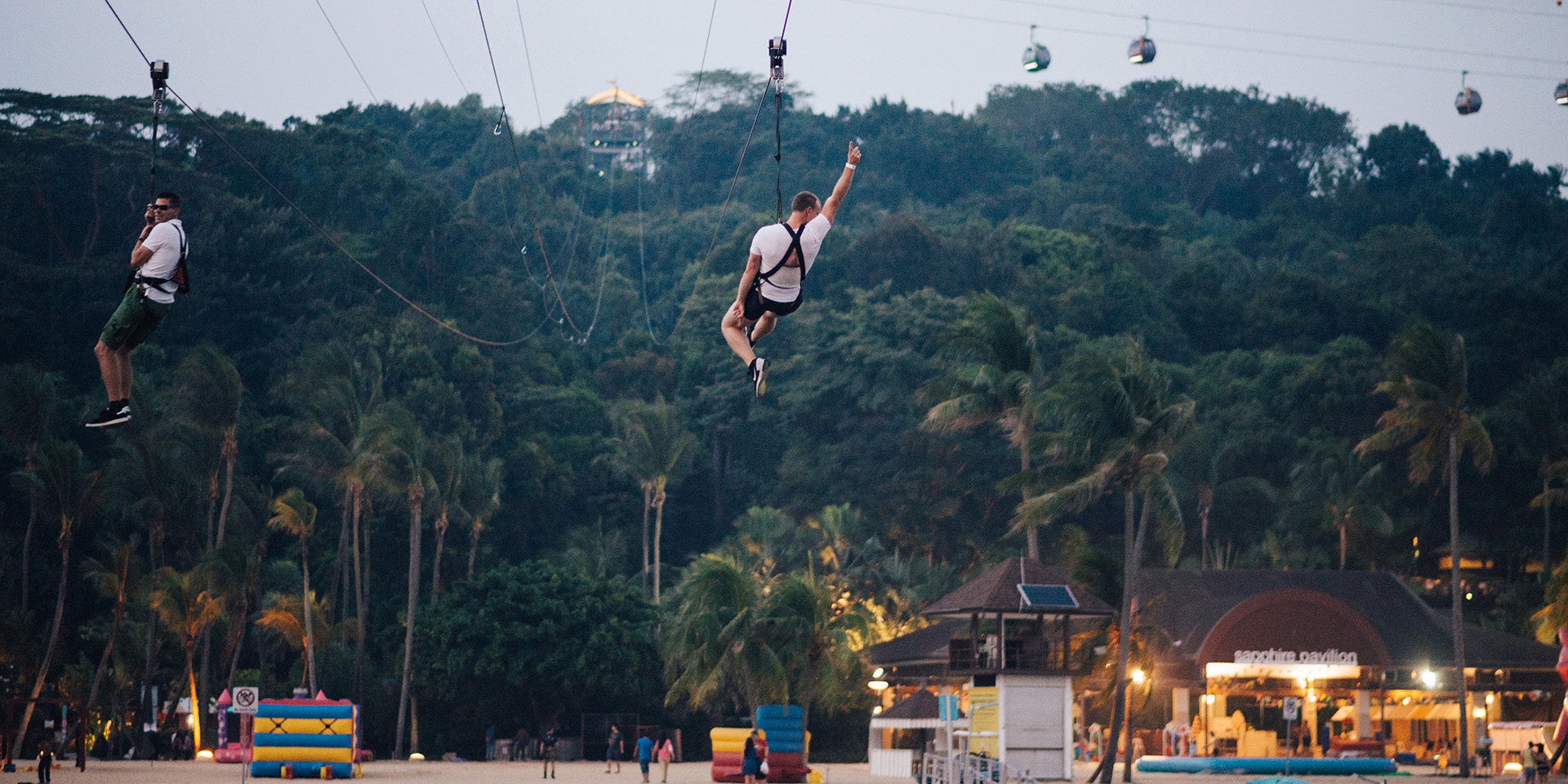Singapore more brings to mind Marina Bay Sands and outstanding real estate prices rather than spitting cobras and porcupines. It’s easy to forget when you’re standing on Orchard Road or in Chinatown, but, once upon a time, Singapore was a jungle filled with tigers and elephants. Today, one of the modern miracles of the Lion City’s development is that, somehow, a little bit of that wild heritage survives in spectacular ways.
Otters

Otters in Singapore can be spotted in and around the Singapore River and on occasion in the various ponds around the grounds of the Marina Bay Sands. Now a serious attraction for visitors to the area, otter spotting (possible even via the Singapore Flyer) has taken the city by storm, generating more attention than trending cat videos on the web.
When seen, word spreads like wildfire to news vendors, residents and visitors alike, who then crowd the river banks for a glimpse. Large audiences, of course, are asked to keep their distance as these furry rodents are easily frightened. If cornered, otters, as wild animals no matter how adorable they appear, will attack in defense of their home or family.
Crocodiles

ABOVE: Croc in the Sungei Buloh Wetlands Reserve.
Crocodiles have continued to fascinate wildlife enthusiasts around the world. Those who seek to keep that spark of fascination going (or ignite it) while in Singapore should head directly to the Sungei Buloh Wetlands Reserve. Originally open in 2002, the reserve is the first ASEAN Heritage site in the country and is nestled in the northeastern corner of the city, flooded with warning signs for the prehistoric reptile throughout the park.

ABOVE: Crocodile basking in Singapore.
Slithering comfortably beneath the water’s surface and between the abundance of mangrove trees, crocodiles are strategic hunters using the environment of the reserve to astound onlookers while preserving their species in a natural habitat. Like the majority of the wildlife on the grounds, crocodile sightings aren’t guaranteed, but they are possible and happen more often than most would assume.
Colugos

The Malayan flying lemur (also known as the Sunda Lemur) is the only species of colugo that can be found in Southeast Asia; specifically in Indonesia, Malaysia, Thailand and Singapore. A colugo is a species of lemur that flies. This particular “flying” lemur that, for the record, doesn’t fly at all, but rather glides from tree to tree to feed on the young leaves and fruit found in the branches there, and favors tropical climates.
To see these extremely rare creatures visit the Bukit Batok Nature Park, specifically the lake near the old quarry, or the adjacent Central Nature Reserve. Be warned, however, that these lemurs are nocturnal and although they can be spotted clinging to tree trunks when sleeping during daylight, they are difficult to spot at any time of the day or night.
Long-Tailed Macaque

ABOVE: Cheeky monkey in the MacRitchie Reservoir Park.
The long-tailed macaque is a species of monkey, typically in packs of 30, that are native to Singapore. Unlike the rare colugos or the shy otters, these curious neighbors are easy to spot if you know where to look. Mostly found in the central and western catchments, the monkey can also be seen in public parks and some urban areas. When seen in public areas visitors are asked not to engage them.

ABOVE: Long-tailed macaque on a car in Singapore.
Guests of the city who wish to witness the animal in its natural habitat can do so by visiting the Bukit Batok Nature Park, Lower Pierce Reservoir Park, or the MacRitchie Reservoir Park on walks.
Birdwatching

ABOVE: The South American toucan can be found at Jurong Bird Park in Singapore.
As a large bird native to the tropics of the Americas, it was a mystery for years why there were toucans in Singapore at all. The last sighting of toucans in the wild was back in 2009, but the birds can still be seen in a large habitat at Jurong Bird Park.

ABOVE: Kingfisher in Singapore.
The toucan is just one example of how diverse and rich the skies and forests of Singapore can be. The Sungei Buloh Nature Park plays host to thousands of birds stopping for a migratory meal from September to March. Indeed, Singapore is an important stop on the East Asian Flyway that migratory birds depend on every year.




